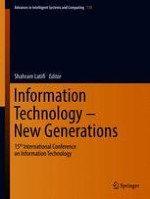2018 | OriginalPaper | Buchkapitel
85. Smart Lighting Controlling System: Case Study of Yarmouk University Museum
verfasst von : Mohammed Akour, Ziad Al Saad, Abdel Rahman Alasmar, Abdulraheem Aljarrah
Erschienen in: Information Technology - New Generations
Aktivieren Sie unsere intelligente Suche, um passende Fachinhalte oder Patente zu finden.
Wählen Sie Textabschnitte aus um mit Künstlicher Intelligenz passenden Patente zu finden. powered by
Markieren Sie Textabschnitte, um KI-gestützt weitere passende Inhalte zu finden. powered by
